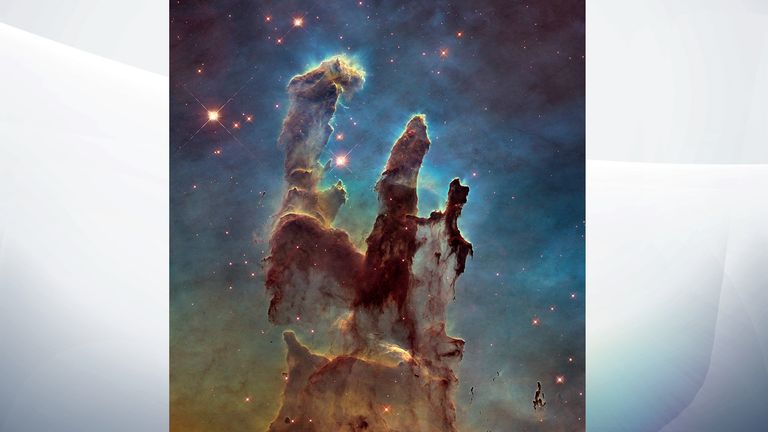Largest-ever 3D map of the universe released by scientists
The map confirms that different parts of the universe, which is largely flat, seem to be expanding at different speeds.
Tuesday 21 July 2020 10:21, UK
Scientists have released the largest ever three-dimensional map of the universe, proving that it is basically flat and filling in an 11 billion year gap in its history.
"We know both the ancient history of the universe and its recent expansion history fairly well, but there's a troublesome gap in the middle 11 billion years," said Dr Kyle Dawson.
Dr Dawson, a cosmologist at the University of Utah, lead the Sloan Digital Sky Survey (SDSS) team which worked for the past five years to fill in that gap.
Their results were produced in an international collaboration with more than 100 astrophysicists taking part in something called the extended Baryon Oscillation Spectroscopic Survey (eBOSS).
The survey captured detailed measurements of more than two million galaxies and quasars, covering 11 billion years of cosmic spacetime.
The map reveals how the structure of the universe is defined by filaments and voids of matter, dating back to when it was just 300,000 years old.
It also shows patterns in the distribution of galaxies which the researchers have used to establish parameters of the universe to better than 1% accuracy.
Crucially it established for certain a cosmological mystery which has baffled astronomers for decades: the mismatch in the Hubble Constant.
The Hubble Constant is based on the observation that the universe is expanding, which we know because galaxies which are further away from Earth are moving even further away faster than galaxies which are closer.
But the problem is nobody can agree how fast it is expanding, and the new survey confirms that different parts seem to be expanding at different speeds - all apparently along the same flat axis, although it does exhibit a geometric curve.
Individual groups in the eBOSS team at universities around the world analysed different areas, creating different parts of the map using galaxies emitting different wavelengths of light.
"To create the part of the map dating back six billion years, the team used large, red galaxies. Farther out, they used younger, blue galaxies," said SDSS.
"Finally, to map the universe eleven billion years in the past and more, they used quasars, which are bright galaxies lit up by material falling onto a central supermassive black hole.
"Each of these samples required careful analysis in order to remove contaminants, and reveal the patterns of the universe," the researchers said.




